結婚式の主役となる花嫁を、ひときわ鮮やかに彩る「色打掛」。その豪華絢爛な刺繍やあでやかな色使いに誰もが目を奪われますが、実はその一枚一枚に、花嫁の幸せを願う深い意味が込められていることをご存知でしょうか。色打掛は単に美しい衣装というだけでなく、日本の豊かな歴史と職人の技、そして未来への祝福が織り込まれた文化の結晶なのです。
- 武家社会の誇りから花嫁衣裳へ:色打掛の歴史的変遷
- 色と文様に隠されたメッセージ:幸せを願う伝統のデザインコード
- 伝統と現代の融合:自分らしい一枚を見つけるための視点
花嫁を彩る、息をのむほどの伝統美
日本の結婚式、特に神前式や披露宴のお色直しで選ばれる和装の中でも、白無垢と並んで圧倒的な存在感を放つのが色打掛です。白無垢が「嫁ぎ先の色に染まる」という純真さを象徴するのに対し、色打掛は「嫁ぎ先での新しい人生の始まり」を鮮やかに祝福する意味合いを持ちます。掛下(かけした)と呼ばれる着物の上に、帯を締めずにそのまま羽織るのが特徴で、その重厚感と華やかさは、花嫁を最高に輝かせるための特別な一着と言えるでしょう。この衣装の歴史を紐解くと、現代の花嫁衣裳としての役割とはまた違った、力強い背景が見えてきます。
武家の誇りから庶民の憧れへ
色打掛のルーツは、室町時代にまで遡ります。もともとは、武家社会の位の高い女性たちが、冬の防寒や正装として着物の上から羽織っていた「打掛」がその始まりでした。特に、豪華な刺繍や金箔が施された色鮮やかな打掛は、武家の権威と富の象徴でもあったのです。江戸時代に入ると、その華やかさから裕福な商人や豪農の間でも婚礼衣装として用いられるようになり、やがて庶民の憧れの衣裳として定着していきました。つまり、色打掛はもともと「生まれ変わる」ための衣装ではなく、有力な家の女性がその誇りを示すためのアウターだったのです。その歴史が、今日の豪華なデザインにも息づいています。
色と文様が織りなす、花嫁へのメッセージ
色打掛の最大の魅力は、その多彩な色と文様にあります。これらは単なるデザインではなく、一つひとつが花嫁の幸せな未来を願う「縁起物」としての意味を持っています。例えば、最もポピュラーな「赤」は、古来より魔除けや厄除けの色とされ、新たな門出を祝福するのにふさわしい色です。また、高貴さや豊かさを象徴する「金色」も豪華さを演出し、人気があります。文様にもそれぞれ意味があり、長寿を象徴する「鶴」や「亀」、夫婦円満を表す「おしどり」、子孫繁栄を意味する「御所車」などが代表的です。これらの色と文様の組み合わせによって、花嫁とその家族の願いが表現されているのです。
未来へつなぐ、色打掛の選び方
現代の結婚式において、色打掛は伝統を重んじながらも、より自由に選ばれるようになっています。素材は、伝統的な正絹から、軽くて手入れがしやすい化学繊維まで様々です。正絹はしなやかな風合いと重厚感が魅力ですが、化学繊維は発色が良く、写真映えするデザインも豊富にあります。選ぶ際には、会場の雰囲気や自身の肌の色、そして何よりも「どんな花嫁になりたいか」というイメージを大切にすることがポイントです。伝統的な古典柄からモダンなデザイン、優しいパステルカラーのものまで、その選択肢は広がり続けています。
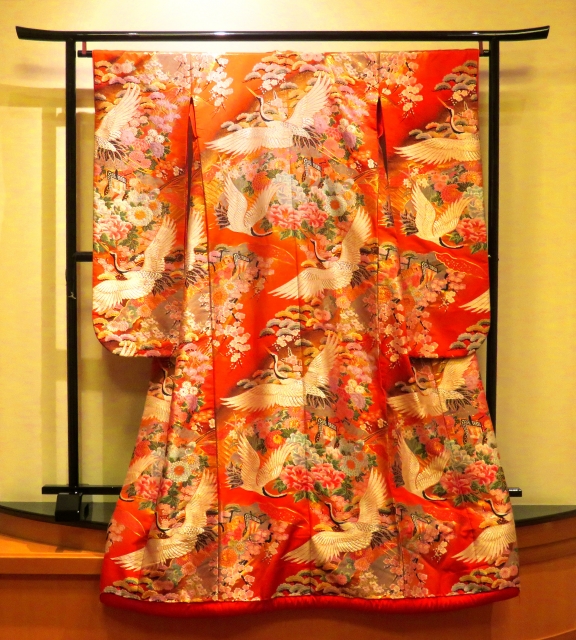
解説ポイント①:武家社会の誇りから花嫁衣裳へ:色打掛の歴史的変遷
色打掛が花嫁衣裳として定着するまでの道のりは、日本の社会構造の変化と深く結びついています。
- 室町時代~安土桃山時代:権威の象徴 武家の女性が正装として着用したのが始まりです。「打掛」という言葉の通り、着物の上から打ち掛けるように羽織るスタイルでした。この時代の打掛は、家の権勢を示すための豪華なものであり、婚礼専用の衣装ではありませんでした。
- 江戸時代:富裕層への広がり 世の中が安定し、経済力をつけた商人階級が台頭すると、彼らも婚礼の際に豪華な打掛を用いるようになりました。これにより、色打掛は武家だけのものから、富裕な庶民の憧れの対象へと変化していきます。
- 明治時代以降~現代:花嫁衣裳としての定着 一般庶民の間で神前結婚式が広まるとともに、色打掛は白無垢からのお色直しで着用する「花嫁専用の衣裳」としての地位を確立しました。戦後は、結婚式場や貸衣装店の普及により、多くの人が特別な日に色打掛を身にまとえるようになったのです。このように、時代と共にその役割を変えながらも、色打掛は常に女性にとっての特別な晴れ着であり続けてきました。
解説ポイント②:色と文様に隠されたメッセージ:幸せを願う伝統のデザインコード
色打掛に描かれる文様は、日本の美意識と縁起を担ぐ文化が凝縮されたデザインコードです。単体でも意味を持ちますが、複数を組み合わせることで、より豊かな物語性を生み出します。
- 生命力と長寿を願う文様
- 鶴と亀: 「鶴は千年、亀は万年」と言われる通り、長寿のシンボルとして最も有名です。
- 松竹梅: 寒い冬でも緑を保つ松、まっすぐに伸びる竹、冬を耐え春に先駆けて咲く梅は、「歳寒三友(さいかんのさんゆう)」と呼ばれ、忍耐力や生命力を表します。
- 高貴さと繁栄を願う文様
- 鳳凰(ほうおう): 古代中国の伝説上の鳥で、平和で幸福な世界が訪れると姿を現すとされています。高貴で華やかな文様の代表格です。
- 御所車(ごしょぐるま): 平安時代の貴族が乗っていた牛車を描いたもので、富や華やかさの象徴とされます。
- 夫婦円満と家庭の幸せを願う文様
- おしどり: 常にペアで行動することから、仲睦まじい夫婦の象徴とされています。
- 蝶: 幼虫から美しい姿に変わることから、女性の美しさや成長を象徴します。
これらの文様の意味を知ることで、色打掛選びはさらに奥深いものとなり、自分や家族の願いを込めた一枚を選ぶことができるでしょう。
解説ポイント③:伝統と現代の融合:自分らしい一枚を見つけるための視点
現代の色打掛選びは、伝統を尊重しつつも、個性を表現する場となっています。選ぶ際の具体的な視点をいくつかご紹介します。
- 素材の違いを理解する
- 正絹(シルク): 自然な光沢、しなやかな肌触り、高級感が魅力です。重量感があり、伝統的な格式を重んじる方に適しています。
- 化学繊維(ポリエステルなど): 鮮やかな発色が可能で、写真映えします。軽量で動きやすく、比較的リーズナブルな価格帯のものが多いのが特徴です。古典柄だけでなく、斬新なデザインも豊富に揃います。
- 技法による印象の違い
- 唐織(からおり): 能装束にも使われる技法で、刺繍のように文様が浮き上がって見える立体感が特徴です。非常に豪華で格調高い印象を与えます。
- 友禅(ゆうぜん): 絵画のように繊細で多彩な模様を描き出す染めの技法です。優美でやわらかな雰囲気を演出します。
- 最新のトレンド 伝統的な赤や金だけでなく、近年は黒地に華やかな文様が映える「黒地の色打掛」や、淡いピンクや水色などの「パステルカラーの色打掛」も人気を集めています。洋髪に合わせやすいモダンなデザインも増えており、より自由なスタイリングが可能になっています。伝統的な意味合いを理解した上で、自分のなりたい花嫁像に合った一枚を探すのが現代的な楽しみ方と言えるでしょう。
参考文献
【English Article】
More Than a Kimono: The Splendid History and Heartfelt Wishes of the Irouchikake
The “Irouchikake” is a garment that gorgeously adorns the bride, the star of the wedding ceremony. While its lavish embroidery and vibrant colors captivate everyone, do you know that each one is imbued with deep meaning, wishing for the bride’s happiness? The Irouchikake is not merely a beautiful costume; it is a cultural crystal, woven with Japan’s rich history, the skill of artisans, and blessings for the future.
- From Samurai Pride to Bridal Gown: The Historical Evolution of the Irouchikake
- Messages Hidden in Colors and Patterns: A Traditional Design Code for Happiness
- Weaving Tradition and Modernity: A Guide to Finding Your Perfect Gown
A Breathtaking Traditional Beauty that Adorns the Bride
Among the traditional Japanese attire chosen for weddings, especially for Shinto ceremonies or receptions, the Irouchikake stands out with an overwhelming presence, alongside the pure white “Shiromuku.” While the Shiromuku symbolizes the purity of “being dyed in the colors of the groom’s family,” the Irouchikake vibrantly celebrates the beginning of a new life with the new family. It is characteristically worn over a kimono called a “kakeshita” without an obi belt, and its stately feel and splendor make it a special garment designed to make the bride shine her brightest. Delving into the history of this attire reveals a powerful background, quite different from its modern role as a bridal gown.
From Samurai Pride to a Commoner’s Dream
The roots of the Irouchikake trace back to the Muromachi period (1336-1573). It originated as an overgarment called “uchikake,” worn by high-ranking women of the samurai class for warmth in winter or as formal attire. In particular, a colorful uchikake with magnificent embroidery and gold leaf was a symbol of the samurai family’s authority and wealth. In the Edo period (1603-1868), its glamour led to its use as a wedding costume among wealthy merchants and farmers, eventually establishing it as an aspirational garment for commoners. This means the Irouchikake was originally not an outfit for “rebirth” but an outer garment for women of powerful families to display their pride. This history is still alive in today’s luxurious designs.
A Bride’s Message Woven in Colors and Patterns
The greatest charm of the Irouchikake lies in its diverse colors and patterns. These are not just designs; each one holds a meaning as a “good luck charm” for the bride’s happy future. For example, the most popular color, red, has been considered a color for warding off evil spirits since ancient times, making it suitable for celebrating a new beginning. Gold, symbolizing nobility and wealth, is also popular for its luxurious feel. The patterns also have their own meanings: cranes and turtles symbolize longevity, mandarin ducks represent a harmonious marriage, and imperial carriages signify prosperity for descendants. The combination of these colors and patterns expresses the wishes of the bride and her family.
Choosing an Irouchikake to Carry into the Future
In modern weddings, the Irouchikake is chosen more freely, while still respecting tradition. The materials range from traditional silk (shoken) to easy-to-care-for synthetic fibers. Silk offers a supple texture and a sense of dignity, while synthetic fibers provide vibrant colors and a wide variety of photo-worthy designs. The key to choosing is to consider the atmosphere of the venue, your skin tone, and most importantly, the image of the bride you want to be. The options continue to expand, from traditional classic patterns to modern designs and gentle pastel colors.
Analysis Point ①: From Samurai Pride to Bridal Gown: The Historical Evolution of the Irouchikake
The journey of the Irouchikake to becoming a bridal gown is deeply connected to the changes in Japan’s social structure.
- Muromachi to Azuchi-Momoyama Periods: A Symbol of Authority It began as formal wear for women of the samurai class. As the name “uchikake” (to hang over) suggests, it was worn over a kimono. The uchikake of this era was a luxurious item to display a family’s power and was not exclusively for weddings.
- Edo Period: Spreading to the Wealthy Class As society stabilized and the merchant class gained economic power, they also began to use lavish uchikake for weddings. This transformed the Irouchikake from being exclusive to the samurai class to an object of admiration for wealthy commoners.
- Meiji Period to Present: Establishment as a Bridal Gown As Shinto-style weddings became widespread among the general public, the Irouchikake established its position as a “bride’s exclusive garment,” worn for the “oironaoshi” (color change) after the white Shiromuku. After World War II, the spread of wedding halls and rental costume shops made it possible for many people to wear an Irouchikake on their special day. Thus, while its role has changed with the times, the Irouchikake has always remained a special ceremonial garment for women.
Analysis Point ②: Messages Hidden in Colors and Patterns: A Traditional Design Code for Happiness
The patterns depicted on an Irouchikake are a condensed design code of Japanese aesthetics and the culture of seeking good fortune. While they have meaning on their own, combining them creates a richer narrative.
- Patterns for Vitality and Longevity
- Cranes and Turtles: As the saying goes, “A crane lives a thousand years, a turtle ten thousand,” they are the most famous symbols of long life.
- Pine, Bamboo, and Plum (Sho-Chiku-Bai): The pine that stays green in the cold winter, the bamboo that grows straight, and the plum that blooms first in spring after enduring the winter are called the “Three Friends of Winter,” representing perseverance and vitality.
- Patterns for Nobility and Prosperity
- Phoenix (Ho-oh): A mythical bird from ancient China, said to appear when a peaceful and happy world arrives. It is a representative of noble and gorgeous patterns.
- Imperial Carriage (Gosho-guruma): A depiction of an ox-drawn carriage used by nobles in the Heian period, symbolizing wealth and splendor.
- Patterns for Marital Harmony and Family Happiness
- Mandarin Ducks (Oshidori): As they always act in pairs, they are considered a symbol of a loving couple.
- Butterflies (Cho): Symbolizing a woman’s beauty and growth, as they transform from a larva into a beautiful creature.
Knowing the meaning of these patterns makes choosing an Irouchikake a more profound experience, allowing you to select a piece that embodies your own and your family’s wishes.
Analysis Point ③: Weaving Tradition and Modernity: A Guide to Finding Your Perfect Gown
Choosing a modern Irouchikake is an opportunity to express individuality while respecting tradition. Here are some specific points to consider when making your choice.
- Understanding Material Differences
- Pure Silk (Shoken): Features a natural luster, supple texture, and a sense of luxury. It has a substantial weight and is suitable for those who value traditional formality.
- Synthetic Fibers (Polyester, etc.): Allows for vibrant colors and looks great in photographs. It is lightweight, easy to move in, and often available at a more reasonable price. A wide range of both classic and innovative designs are available.
- Differences in Impression by Technique
- Karaori: A weaving technique also used in Noh costumes, characterized by a three-dimensional effect where patterns appear raised like embroidery. It gives a very luxurious and formal impression.
- Yuzen: A dyeing technique that creates delicate and colorful patterns like paintings. It creates a graceful and soft atmosphere.
- Latest Trends In addition to traditional red and gold, “black Irouchikake” with vibrant patterns on a black background and “pastel-colored Irouchikake” in pale pink or light blue have become popular in recent years. There is also an increase in modern designs that are easy to pair with Western hairstyles, allowing for more freedom in styling. The modern way to enjoy the Irouchikake is to understand its traditional significance and then find the one that fits the bridal image you aspire to.
References
- (These references are in Japanese, as they are the primary sources for this article.)
- Kimono-Yogo-Taisen, What is Irouchikake
- Hanayome no Kimono, What is Irouchikake? Explaining the difference with Shiromuku and how to choose
- Kyokane, Basic Knowledge of Irouchikake [Origin, Types, How to Choose] Bridal Kimono for Weddings

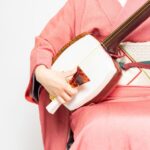



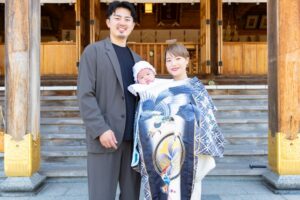
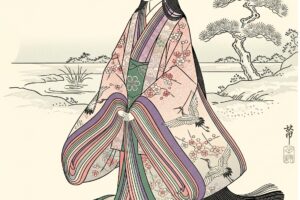
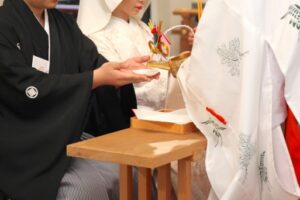
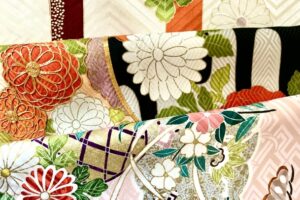
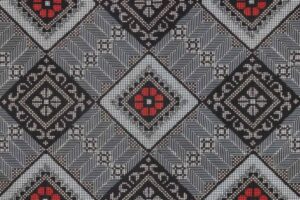
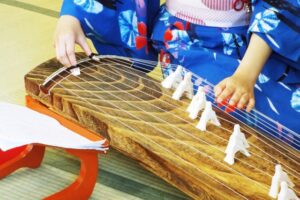
コメントを残す